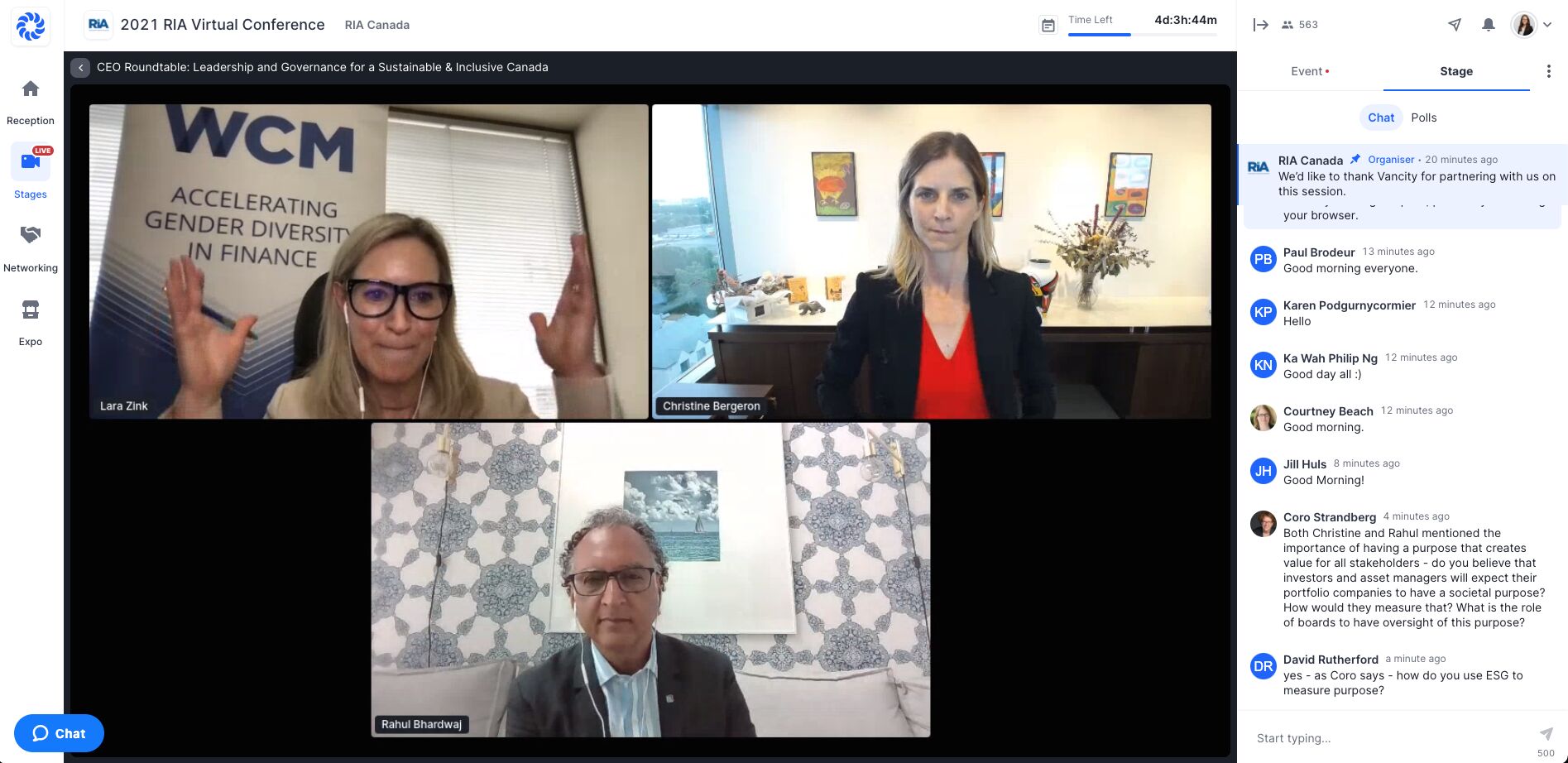
Speakers:
Christine Bergeron, President and CEO, Vancity
Rahul Bhardwaj, President and CEO, Institute of Corporate Directors
Lara Zink, President and CEO, Women in Capital Markets (Moderator)
The RIA kicked off its first conference session with a roundtable discussion on leadership and governance with industry leaders Lara Zink, Christine Bergeron and Rahul Bhardwaj. Jaqui Parchment, CEO of Mercer Canada, was also scheduled to join but could not due to technical issues. The trio spoke to the interconnectivity of sustainability and inclusion, and why leadership can no longer remain silent or inactive on these issues.
“Generation Z cares about people and the planet, and they’re incorporating ESG into their decisions on where they work and how they invest,” Zink said.
There is now pressure on asset managers and governance frameworks to progress on ESG issues. Movements like #MeToo, Black Lives Matter and climate change have created social pressure to adopt these practices, but at the same time, more and more companies know they need to adopt ESG to create long-term value, Bhardwaj added.
Businesses and asset managers can also no longer look at issues like environmental sustainability, and social and economic inclusion as distinct spheres. In the past, a company could get away with focusing on either the environment or social issues. In reality, the two are intertwined.
For instance, in the case of climate change, those least responsible are at the risk of bearing the brunt of its impact, Bergeron said.
Companies need to adopt a more holistic outlook on how to reduce harm and maximize positive impacts for people, communities and the planet. This means putting people at the centre of your ESG framework and asking, specifically, how company decisions impact people, Bergeron added. This can lead to better outcomes across all areas.
“These are really systemic issues and they do require a system to change. So focusing on one is necessary but I would say insufficient,” she said.
When it comes to asset managers, the focus on ESG should extend beyond investments to include the business model, as a whole, especially if they want to retain top talent.
Canada’s boards look to make changes
It’s really about connecting purpose with value creation for all stakeholders, Bhardwaj says.
Boards are now looking to structure themselves differently, not just in terms of board composition, but also in terms of their agendas so they can create more space to talk about ESG, reputational risk, or just business risk and strategy. There’s so much compliance to be done that boards don’t always have the space to talk amongst themselves on strategy, he added.
At the Institute of Corporate Directors (IDC), they’re creating opportunities for boards and chairs to understand what other successful boards are doing, and learn how they may be able to follow in the same path, not just in the Canadian environment, but the global environment as well.
The ICD also provides support to its members on how they can further embrace diversity within board and senior management positions. The ICD provides a free toolkit on their website and a director’s registrar.
How organizations can drive sustainability and inclusion
“A business is not truly successful if the environment and the community in which it operates is also not thriving,” Bergeron said. If a leader doesn’t see the value of sustainability and inclusion, they should read up on the research regarding risk and opportunities because there’s a sound business case.
Employees, investors, clients and consumer views have shifted significantly and quickly, making ESG a long-term strategic opportunity. Leaders shouldn’t view these issues as the work of their sustainability team. Instead, they need to embed it into their strategy, Bergeron said. For those that haven’t started, they’re already behind.
“If your business model can’t support these societal and stakeholder expectations, your purpose is misaligned right now,” Bhardwaj added. “If you can’t make the business case, you’re not trying hard enough. And if you really can’t make the business case under your model, you’re doing something fundamentally wrong.”
